Understanding Agent Occupancy Rate vs Utilization in 2025
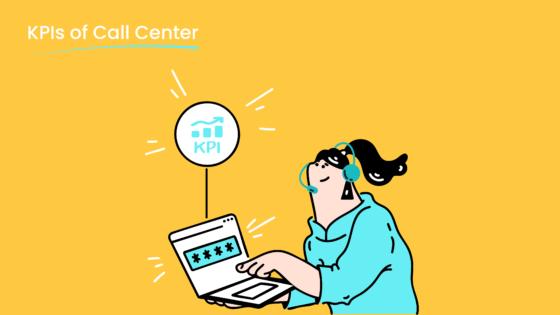
Agent occupancy rate (APR) measures the percentage of time agents actively handle calls or tasks during their available hours. In contrast, call center utilization evaluates the percentage of an agent's total working hours spent on productive tasks. While occupancy focuses on active engagement during availability, utilization considers the broader scope of total hours worked.
Understanding these metrics is crucial for optimizing call center performance. For instance, maintaining an occupancy rate between 85% and 90% ensures agents remain productive without risking burnout. Similarly, tracking utilization rate helps managers balance staffing levels and improve scheduling efficiency. Tools like Sobot's Voice/Call Center provide real-time monitoring to help you achieve this balance, ensuring both agent well-being and operational success.
What Is Agent Occupancy Rate (APR)?
Definition of Agent Occupancy Rate
Explanation of active time vs available time
Agent occupancy rate (APR) measures the percentage of time agents actively handle customer interactions during their logged-in hours. Active time includes tasks like talking to customers, placing them on hold, or completing after-call work. Available time refers to the total time agents are logged into the system, ready to take calls or perform tasks. For example, if an agent spends 6 hours actively handling calls out of an 8-hour shift, their APR would reflect this proportion.
APR focuses on how efficiently agents use their available time. It helps managers understand whether agents are overburdened or underutilized. This metric ensures that agents remain productive without being overwhelmed.
Common standards for call center occupancy rates
Call center occupancy typically ranges between 85% and 90%. This range strikes a balance between productivity and agent well-being. Rates above 90% may lead to burnout, while rates below 85% could indicate underutilization. Maintaining this balance is crucial for ensuring both operational efficiency and a healthy work environment.
How to Calculate Agent Occupancy Rate
Formula for occupancy rate
The formula for calculating occupancy rate is straightforward:
Occupancy Rate = (Handle Time / Total Logged-in Time) × 100
Handle time includes talk time, hold time, and after-call work. Total logged-in time refers to the entire duration an agent is available to work.
Example calculation for clarity
Consider an agent who spends 5 hours on productive tasks during an 8-hour shift. Their occupancy rate would be:
Occupancy Rate = (5 / 8) × 100 = 62.5%
In another scenario, if an agent spends 4 hours handling calls out of 6 logged-in hours, the occupancy rate would be:
Occupancy Rate = (4 / 6) × 100 = 66.67%
These examples highlight how APR reflects the proportion of active time compared to total availability.
Role of Occupancy in Call Center Operations
Impact on agent workload and efficiency
Occupancy plays a vital role in managing agent workload. A balanced occupancy rate ensures agents remain productive without feeling overworked. High occupancy rates can maximize efficiency, but they must be monitored to avoid negative impacts on agent morale and performance.
Risks of high occupancy rates (e.g., burnout)

Excessively high occupancy rates can lead to agent burnout. When agents have little downtime between tasks, they may experience stress and fatigue. This can result in lower job satisfaction and higher turnover rates. Tools like Sobot's Voice/Call Center help monitor occupancy in real-time, enabling managers to adjust workloads and maintain a healthy balance.
How Sobot's Voice/Call Center Enhances Occupancy
Intelligent IVR and Smart Call Routing
Sobot's Voice/Call Center uses Intelligent IVR (Interactive Voice Response) to streamline call handling. This feature allows you to customize greetings, create menus, and route calls to the right agents or teams. By automating these processes, your agents can focus on resolving customer issues instead of spending time on repetitive tasks. Smart call routing ensures that calls are directed to the most suitable agent based on factors like skill set, availability, or priority. This reduces wait times and improves the overall efficiency of your call center.
For example, if a customer needs technical support, the system automatically routes the call to a tech-savvy agent. This targeted approach not only enhances the occupancy rate but also boosts customer satisfaction. With Sobot's advanced routing capabilities, your team can handle more calls without feeling overwhelmed.
Real-Time Monitoring and Analysis
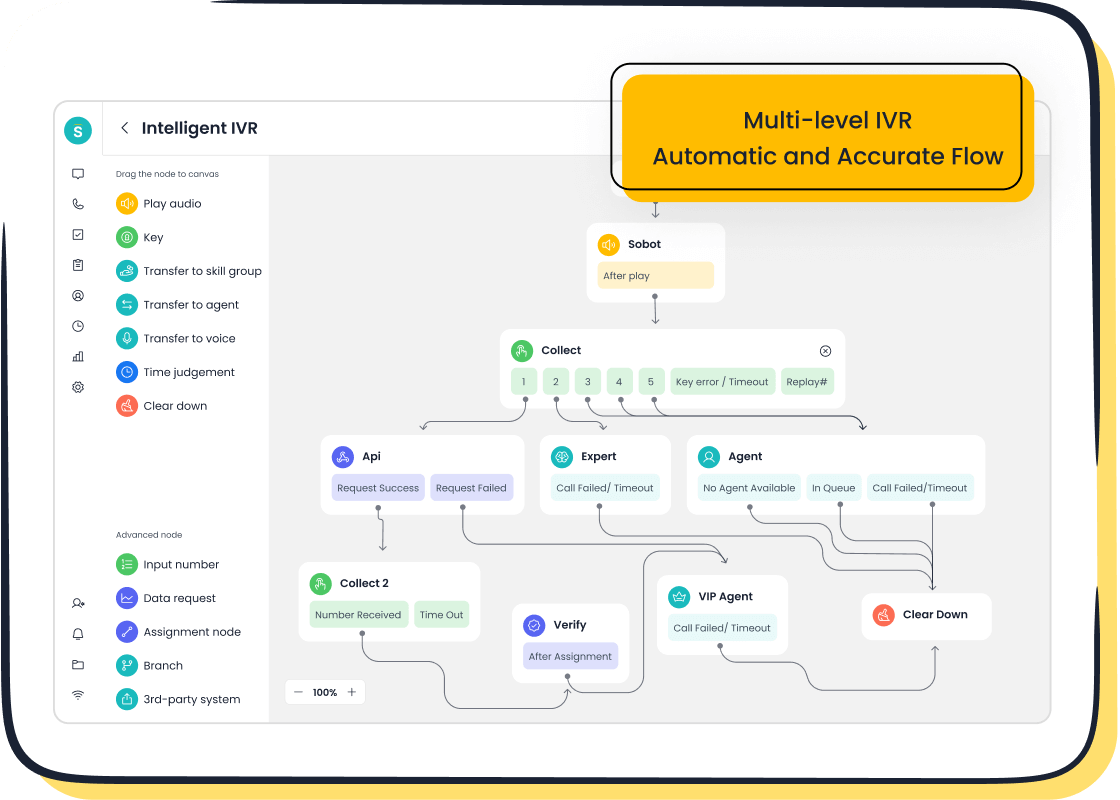
Real-time monitoring is another powerful feature of Sobot's Voice/Call Center. It provides you with live insights into agent performance and call center metrics. Managers can track occupancy rates, handle times, and call volumes as they happen. This allows you to make quick adjustments, such as redistributing workloads or reallocating resources, to maintain a balanced occupancy rate.
The platform also offers detailed analytics to help you identify trends and areas for improvement. For instance, if you notice a spike in call volumes during certain hours, you can adjust staffing levels accordingly. These insights ensure that your call center operates efficiently while keeping agents productive and engaged.
| Metric | Result |
|---|---|
| Reduction in inbound discussion volume | 20% |
| Increase in positive feedback | 96% + |
| Correct answers by AI platform | Over 80% |
| Customer satisfaction rate | Over 95% |
| Self-service question resolution | 22.2% |
| Customer satisfaction score (CSAT) | 97% |
| Problem resolution rate | 85% |
| Customer happiness rate | 99% |
| Sign-off rate increase | About 35% |
| COD collection rate increase | About 40% |

By leveraging these tools, Sobot helps you maintain an optimal balance between agent productivity and well-being. This ensures that your call center achieves its operational goals while delivering exceptional customer experiences.
What Is Call Center Utilization?
Definition of Call Center Utilization
Explanation of total working hours vs productive hours
Call center utilization measures how effectively agents use their total working hours for productive tasks. Unlike agent occupancy rate (APR), which focuses on active time during availability, utilization considers the entire shift. For example, if an agent works an 8-hour shift but spends only 4 hours handling calls or completing tasks, their utilization rate would be 50%. This metric provides a broader view of productivity, helping you evaluate overall efficiency.
Broader scope of utilization compared to occupancy
Utilization offers a more comprehensive perspective than occupancy. While occupancy rates focus on active engagement during logged-in hours, utilization accounts for all paid time, including breaks and idle periods. This broader scope makes it a valuable tool for assessing workforce management and identifying areas for improvement.
How to Calculate Call Center Utilization
Formula for utilization rate
The formula for calculating utilization rate is:
Utilization Rate = (Total Worked Hours / Total Available Hours) × 100
This calculation includes all productive work, such as handling calls, completing after-call tasks, and other assigned duties.
Example calculation for clarity
Imagine an agent works 6 hours productively during an 8-hour shift. Their utilization rate would be:
Utilization Rate = (6 / 8) × 100 = 75%
In another scenario, if an agent spends 4 hours on tasks out of a 10-hour shift, the utilization rate would be:
Utilization Rate = (4 / 10) × 100 = 40%
These examples highlight how utilization reflects the efficiency of total working hours.
Broader Implications of Utilization
Connection to workforce management and scheduling
Utilization plays a critical role in workforce management. It helps you determine how many agents are needed to meet service-level agreements (SLAs). For instance, the Erlang-C model predicts staffing needs based on expected call volumes. By analyzing utilization, you can optimize shift patterns and ensure agents are neither overworked nor underutilized.
Importance for long-term resource planning
High utilization rates indicate efficient use of resources, but they must align with long-term goals. Companies like Salesforce have improved utilization by 15% using AI-powered scheduling tools. Similarly, Sobot's Voice/Call Center offers real-time monitoring and analytics, enabling you to plan resources effectively. This ensures your call center adapts to changing demands while maintaining agent well-being.
How Sobot's Voice/Call Center Optimizes Utilization
Unified workspace for agents
Sobot's Voice/Call Center provides a unified workspace that simplifies your agents' daily tasks. This workspace consolidates all essential tools, such as customer information, call logs, and task management features, into a single interface. By reducing the need to switch between multiple systems, agents can focus more on productive work. This streamlined approach directly improves agent utilization by minimizing idle time and enhancing task efficiency.

For example, when an agent receives a call, the unified workspace instantly displays the customer's history and preferences. This allows the agent to address issues faster and more effectively. The result is a smoother workflow and higher productivity. Companies using Sobot's solutions have reported significant improvements, such as a 20% reduction in inbound discussion volume and a 96%+ increase in positive feedback. These outcomes demonstrate how a unified workspace can optimize call center utilization while maintaining high customer satisfaction.
AI-powered voicebot for task automation
Sobot's AI-powered voicebot takes automation to the next level. This intelligent tool handles repetitive tasks, such as answering FAQs or routing calls, freeing your agents to focus on more complex issues. By automating these processes, the voicebot enhances agent utilization and ensures your team spends more time on value-driven activities.
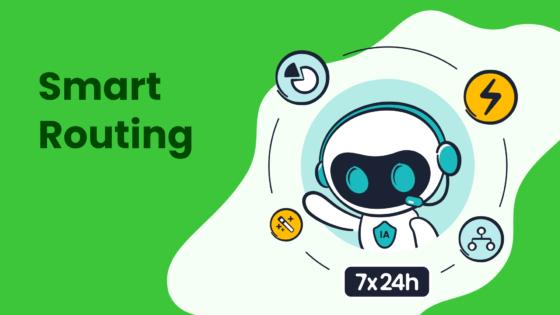
The voicebot's capabilities extend beyond basic automation. It uses advanced AI to recognize customer intent and provide accurate responses. For instance, over 80% of answers delivered by Sobot's AI-powered solutions are correct, contributing to a 95% customer satisfaction rate. Additionally, the voicebot enables self-service options, which independently resolve 22.2% of customer questions. These features not only improve operational efficiency but also elevate the overall customer experience. With Sobot's voicebot, your call center can achieve higher productivity and better resource allocation.
| Implementation Example | Outcome |
|---|---|
| Self-service options | Reduced inbound discussion volume by 20% and increased positive feedback to 96%+ |
| AI-powered solutions | Over 80% of answers are correct, with 95% customer satisfaction |
| Intelligent solutions | 22.2% of customer questions answered independently, CSAT score of 97% |
| Cloud contact center | 85% of problems solved, 99% customer satisfaction |
| Communication tool | Sign-off rate increased by 35%, COD collection rate increased by 40% |
Key Differences Between Occupancy and Utilization
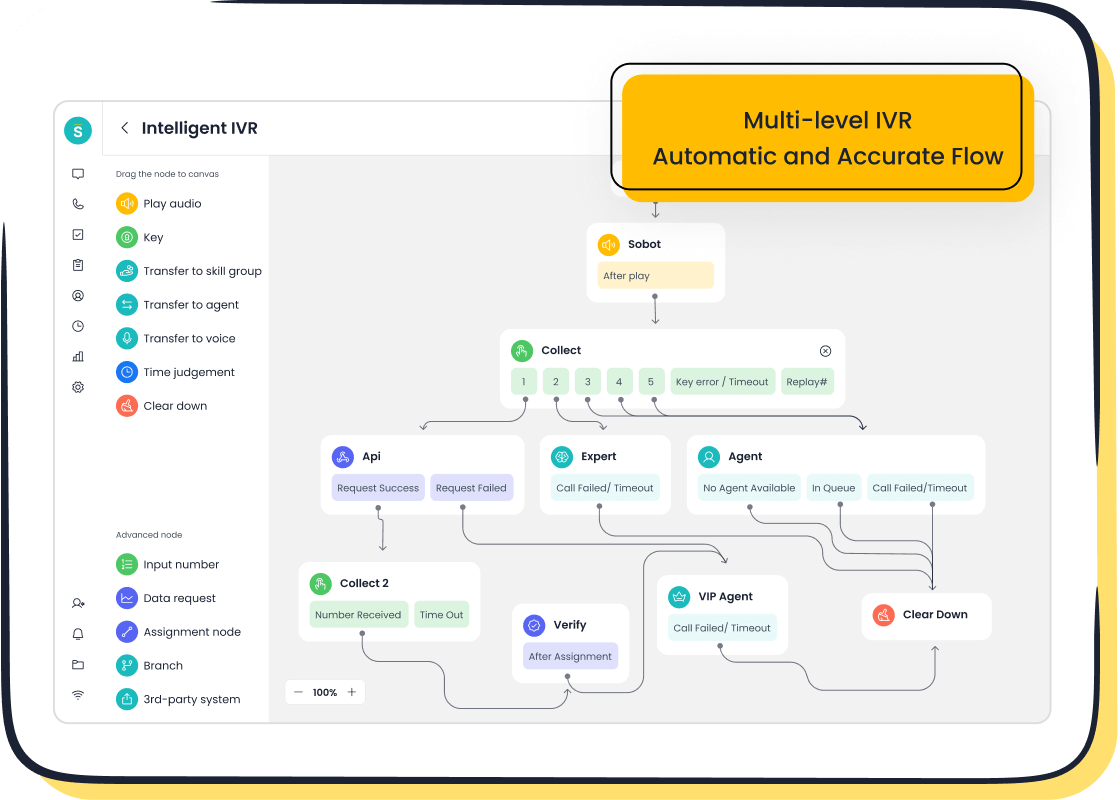
Side-by-Side Comparison
Focus on timeframes (availability vs total hours)
Occupancy focuses on the time agents actively handle customer interactions during their available hours. It excludes breaks and idle time, offering a narrow view of task handling. In contrast, utilization considers the total working hours, including breaks and idle periods. This broader perspective helps you evaluate overall productivity. For example, an agent with an 85% occupancy rate might still have a lower utilization rate if they spend significant time on non-call tasks or breaks.
| Metric | Definition | Break Inclusion | Measures | Ideal Range |
|---|---|---|---|---|
| Occupancy | Time spent on handling interactions only. | Excludes breaks and idle time. | Interaction handling time. | 85-90% |
| Utilization | Total time spent on productive tasks relative to total time at work. | Includes breaks and idle time. | Overall productivity. | 80-90% |
Metrics used for different operational goals
Occupancy helps you manage workforce efficiency during customer interactions. It ensures agents remain productive without being overburdened. Utilization, on the other hand, evaluates how effectively agents use their total working hours. This metric is crucial for long-term resource planning and identifying inefficiencies. For instance, high utilization rates may indicate efficient resource use, while low rates could signal underutilization or poor task allocation.
Practical Examples
Scenario 1: High occupancy but low utilization
Imagine an agent spends 6 hours actively handling calls during an 8-hour shift, resulting in a 75% occupancy rate. However, if the agent’s total working hours include 2 hours of idle time, their utilization rate drops to 60%. This scenario highlights how high occupancy can coexist with low utilization, often due to inefficient task allocation or excessive idle periods.
Scenario 2: Balanced occupancy and utilization
In a balanced scenario, an agent works an 8-hour shift with 6 hours spent on calls and 1 hour on other productive tasks, such as training or administrative work. This results in a 75% occupancy rate and an 87.5% utilization rate. Such balance ensures agents remain productive while avoiding burnout, leading to better performance and customer satisfaction.
Why Understanding the Difference Matters
Avoiding misinterpretation of metrics
Misinterpreting occupancy and utilization can lead to poor decisions. For example, focusing solely on occupancy might overlook inefficiencies in non-call tasks. Understanding both metrics helps you identify areas for improvement, such as reducing idle time or reallocating tasks.
Aligning metrics with business objectives
Recognizing the importance of occupancy vs. utilization allows you to align these metrics with your goals. Occupancy ensures agents handle customer interactions efficiently, while utilization helps optimize overall resource use. Tools like Sobot's Voice/Call Center provide real-time insights into both metrics, enabling you to make informed decisions that enhance operational efficiency and agent well-being.
Why Both Metrics Matter in Call Centers
The Importance of Balancing Occupancy and Utilization
Ensuring agent well-being and avoiding burnout
Balancing occupancy and utilization is essential for maintaining agent well-being. High occupancy rates, especially above 90%, can lead to stress and fatigue. When agents face back-to-back calls without breaks, they risk burnout. This not only affects their morale but also increases turnover rates, which can be costly for your call center. Maintaining an optimal occupancy rate between 70-90% ensures agents have enough time to recharge while staying productive.
Effective workload management can help you achieve this balance. For example:
- Avoid shortening breaks to improve occupancy.
- Introduce "forced idle" periods to prevent continuous interactions.
- Use workforce management tools to distribute high-intensity calls evenly.
By implementing these strategies, you can create a healthier work environment for your agents, leading to better service quality and employee satisfaction.
Maintaining operational efficiency and customer satisfaction
Balancing these metrics also ensures operational efficiency and customer satisfaction. When occupancy and utilization are optimized, agents can focus on delivering quality service without feeling overwhelmed. For instance, during peak times like festival seasons, measuring these metrics at different times of the day helps you adapt to fluctuating call volumes. This approach prevents overworking agents while maintaining service levels.
A balanced workload leads to a more stable workforce, which directly benefits your customers. Happy agents provide better service, resulting in higher customer satisfaction and retention rates.
Impact on Call Center Performance
Relationship to service level agreements (SLAs)
Occupancy and utilization directly impact your call center's ability to meet SLAs. Metrics like Average Speed of Answer (ASA) and Service Level are critical for maintaining customer satisfaction. For example:
| Metric | Description |
|---|---|
| Average Speed of Answer (ASA) | Measures the average time taken to answer calls, impacting customer satisfaction and retention. |
| Service Level | Percentage of calls answered within a specific time frame, directly linked to SLAs and customer retention. |
Meeting these targets ensures your call center remains competitive and reliable. Tools like Sobot's Voice/Call Center can help you monitor these metrics in real-time, enabling you to make adjustments as needed.
Influence on customer experience and retention
High occupancy rates can negatively affect the time spent engaging customers. Agents under constant pressure may rush through calls, leading to poor experiences. Conversely, low utilization rates might indicate inefficiencies, such as excessive idle time. Striking the right balance ensures agents can provide personalized and effective support, enhancing customer satisfaction and loyalty.
For example, companies that aim to answer 90% of calls within 20 seconds often see improved retention rates. By optimizing occupancy and utilization, you can ensure your call center meets these standards while delivering exceptional service.
Challenges in Managing Both Metrics
Overstaffing vs understaffing risks
Managing occupancy and utilization requires careful planning to avoid overstaffing or understaffing. Overstaffing can lead to low occupancy rates, wasting resources. Understaffing, on the other hand, increases workload, causing stress and burnout. Seasonal trends or marketing campaigns often cause fluctuations in call volumes, making it challenging to maintain the right staffing levels.
Using tools like Sobot's Voice/Call Center, which offers real-time monitoring and analytics, can help you adapt to these changes. By analyzing call patterns, you can adjust staffing levels to match demand, ensuring efficiency and agent well-being.
Adapting to fluctuating call volumes
Fluctuating call volumes pose another challenge. During peak periods, such as new product launches, call volumes can spike, leading to high occupancy rates. Conversely, during off-peak times, low call volumes may result in underutilized agents.
To address this, you can:
- Use historical data to forecast call volumes.
- Implement flexible scheduling to match agent availability with demand.
- Leverage automation tools like AI-powered voicebots to handle repetitive tasks.
These strategies ensure your call center remains agile and efficient, regardless of call volume fluctuations.
How Sobot Supports Call Center Performance
99.99% SLA Uptime for Stability
Sobot ensures your call center operates without interruptions by offering a 99.99% SLA uptime. This high level of system reliability means your agents can handle calls and tasks smoothly, even during peak hours. With a global network spanning 110 points of presence in 93 cities, Sobot provides consistent performance across different regions. This stability reduces downtime, helping you meet service-level agreements (SLAs) and maintain customer trust.
Reliable uptime directly impacts key performance metrics. For example, Sobot's solutions have led to a 22.2% self-service question rate and a 97% customer satisfaction score. These results demonstrate how a stable system supports both agent productivity and customer experience.
| Metric | Value |
|---|---|
| Self-service question rate | 22.2% |
| Customer Satisfaction Score | 97% |
| Sign-off rate | 35% increase |
| COD collection rate | 40% increase |

By ensuring near-perfect uptime, Sobot helps you maintain operational efficiency and meet your call center's performance goals.
Seamless Integration with CRM Systems
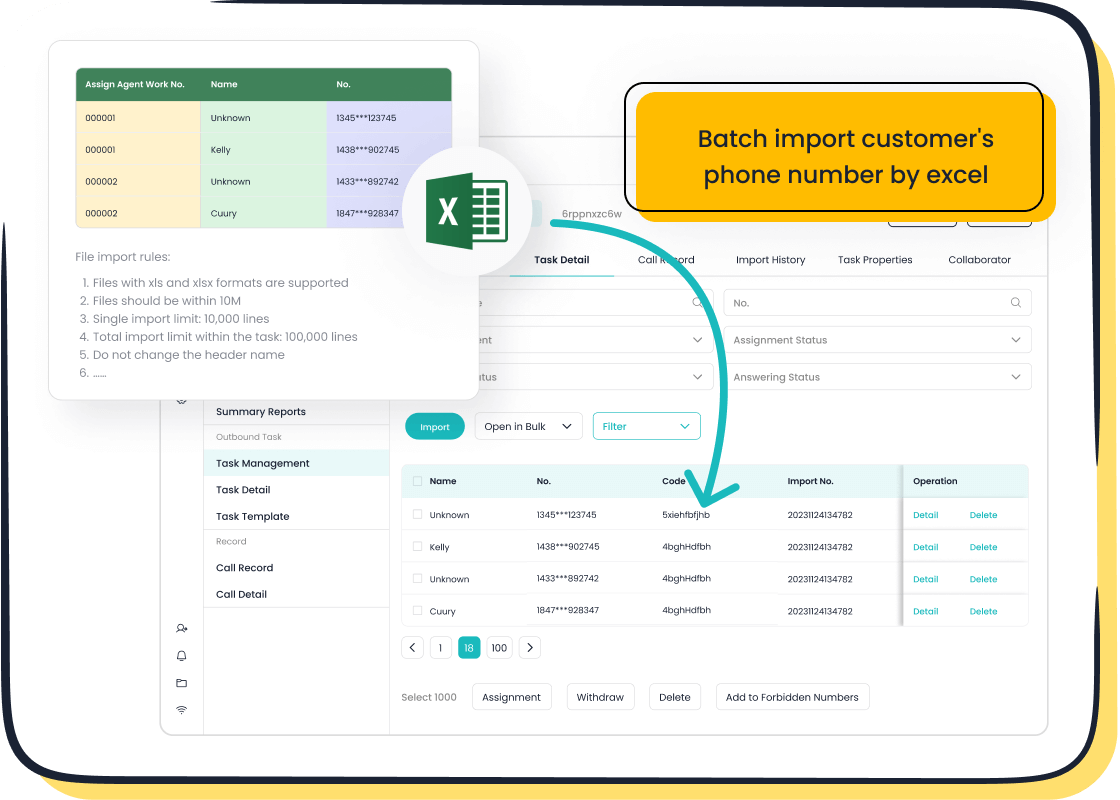
Sobot's Voice/Call Center integrates effortlessly with your existing CRM systems. This feature allows your agents to access customer data instantly, improving their ability to resolve issues quickly. For example, when a customer calls, the system displays their history and preferences in real time. This reduces the time spent searching for information and enhances the overall customer experience.
Integration also simplifies workflows. Your agents can manage calls, track interactions, and update records without switching between platforms. This unified approach improves both occupancy and utilization rates by minimizing idle time and streamlining tasks. Businesses using Sobot have reported a 35% increase in sign-off rates and a 40% boost in COD collection rates, showcasing the tangible benefits of seamless integration.
With Sobot, you can unify your tools and optimize your call center's performance, ensuring both agent efficiency and customer satisfaction.
Best Practices for Managing Occupancy and Utilization
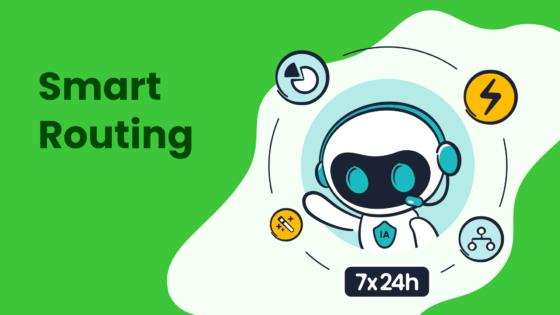
Monitoring and Analyzing Metrics
Using workforce management tools like Sobot's Voice/Call Center
Effective monitoring of call center metrics requires advanced tools. Sobot's Voice/Call Center provides real-time insights into key performance indicators like call center occupancy, agent utilization, and average handle time (AHT). These metrics help you identify inefficiencies and make data-driven decisions. For example, monitoring AHT can improve operational efficiency and cost control. Companies like Amazon aim for an AHT under 600 seconds, showcasing the importance of this metric in maintaining efficiency.
Additionally, engaging with agents about their workload and call nature offers valuable qualitative insights. Combining these with quantitative data ensures a comprehensive understanding of performance. Sobot's platform simplifies this process by integrating monitoring and analysis into a unified workspace, enabling you to adjust targets based on customer satisfaction and feedback.
Setting realistic benchmarks for occupancy and utilization
Setting achievable benchmarks ensures your call center operates efficiently without overburdening agents. Industry standards suggest maintaining call center occupancy between 85% and 90% to balance productivity and well-being. Similarly, utilization rates between 80% and 90% indicate effective resource use. Monitoring additional metrics like cases per hour and AHT provides a clearer picture of performance. Sobot's analytics tools help you set and track these benchmarks, ensuring alignment with your operational goals.
Optimizing Workforce Scheduling
Implementing flexible schedules
Flexible scheduling improves agent productivity and morale. Real-time adjustments to staffing based on demand fluctuations help you manage unexpected call spikes. For instance, structured breaks during high-intensity shifts enhance focus and reduce burnout. Sobot's workforce management tools allow you to create adaptable schedules that align with call volume trends, ensuring agents remain engaged and efficient.
Leveraging historical data for forecasting
Historical data plays a vital role in workforce planning. Seasonal trends, holidays, and marketing campaigns significantly impact call volumes. By analyzing these patterns, you can forecast demand and optimize staffing levels. For example, smarter staffing strategies reduce reliance on overtime, preventing agent exhaustion. Sobot's Voice/Call Center provides detailed analytics, enabling you to predict call volumes and adjust schedules proactively.
Supporting Agent Well-Being
Providing regular breaks and support
Regular breaks are essential for maintaining agent well-being. Structured downtime prevents burnout and keeps agents focused. For example, call centers that implement mandatory breaks during peak hours report higher employee satisfaction. Sobot's tools help you schedule breaks effectively, ensuring agents have time to recharge without disrupting operations.
Encouraging open communication about workload
Open communication fosters a supportive work environment. Encouraging agents to share their workload concerns helps you identify and address issues early. For instance, agents handling high call volumes may need additional support or training. Sobot's unified workspace facilitates transparent communication, allowing managers to monitor workloads and provide timely assistance.
Continuous Improvement Strategies
Regularly reviewing and adjusting processes
Regular reviews of your call center processes help you identify inefficiencies and improve performance. By analyzing metrics like occupancy and utilization, you can pinpoint areas that need attention. For example, AI-driven analytics can highlight performance gaps in agent skills or workflows. This allows you to make targeted adjustments, such as redistributing tasks or refining call-handling procedures.
Encouraging feedback from agents is another effective way to refine processes. Agents often have valuable insights into daily operations. By incorporating their suggestions, you can create a more efficient and supportive work environment. For instance, if agents report challenges with specific tools, you can prioritize updates or training to address these issues. This approach fosters a culture of continuous improvement, ensuring your call center adapts to changing demands.
Training managers to interpret and act on metrics
Managers play a crucial role in driving improvements in your call center. Training them to interpret key metrics like occupancy and utilization ensures they can make informed decisions. For instance, workshops on data analysis can help managers identify trends and adjust staffing levels proactively. This reduces the risk of overstaffing or understaffing, which directly impacts efficiency.
Tailored training sessions also enhance managerial skills. These sessions can focus on advanced communication tactics, stress management, or emotional intelligence. For example, coaching managers to handle high-pressure situations improves team morale and performance. Additionally, regular mentorship programs keep managers updated on industry best practices, enabling them to lead more effectively.
Creating a supportive environment for managers encourages continuous learning. Hosting interactive sessions or providing career development opportunities boosts their motivation. This not only improves their ability to manage metrics but also enhances overall team performance. A well-trained management team ensures your call center operates at peak efficiency while maintaining high employee satisfaction.
Understanding the differences between agent occupancy rate (APR) and call center utilization is essential for improving operational efficiency. APR measures the time agents actively handle customer interactions, while utilization evaluates overall productivity, including breaks and idle periods. Both metrics serve unique purposes, with APR focusing on interaction handling and utilization addressing broader workforce management.
Balancing these metrics ensures agents remain productive without risking burnout. For example, maintaining an APR between 85% and 90% supports efficiency while protecting agent well-being. Similarly, optimizing utilization helps allocate resources effectively, meeting customer demands without overburdening your team.
Sobot's Voice/Call Center offers advanced tools like real-time monitoring, AI-powered voicebots, and seamless CRM integration to help you achieve this balance. With 80% of call centers adopting AI technologies and 66% using cloud-based solutions, Sobot ensures your operations stay ahead of industry trends. These innovations enhance agent performance and improve customer satisfaction, making your call center a model of efficiency in 2025.

FAQ
What is the ideal occupancy rate for a call center?
The ideal occupancy rate ranges between 85% and 90%. This balance ensures agents remain productive without experiencing burnout. For example, maintaining this range allows agents to handle customer interactions efficiently while having enough downtime to recharge.
How does utilization differ from occupancy in a call center?
Utilization measures the percentage of total working hours spent on productive tasks, including breaks and idle time. Occupancy focuses only on active time spent handling customer interactions. Both metrics provide unique insights into workforce efficiency.
Why is balancing occupancy and utilization important?
Balancing these metrics ensures agents stay productive without overworking. High occupancy rates can lead to burnout, while low utilization may indicate inefficiencies. Tools like Sobot's Voice/Call Center help you monitor and optimize these metrics effectively.
How can Sobot's Voice/Call Center improve agent performance?
Sobot's platform offers features like real-time monitoring, intelligent IVR, and AI-powered voicebots. These tools streamline workflows, reduce idle time, and enhance productivity. For instance, the unified workspace simplifies task management, improving both occupancy and utilization rates.
What role does technology play in modern call centers?
Technology like AI and automation enhances efficiency in call centers. For example, AI-powered voicebots handle repetitive tasks, freeing agents for complex issues. Sobot's solutions integrate these technologies, ensuring your call center operates at peak performance.
See Also
Exploring the Responsibilities of IT Call Center Agents
Best 10 Analytics Software for Call Centers This Year
Leading 10 Speech Analytics Solutions for Call Centers
